March participants on the brutal dispersal, explosions, and the “trap”
26 October 2020, 19:36 | Maya Kahno, TUT.BY
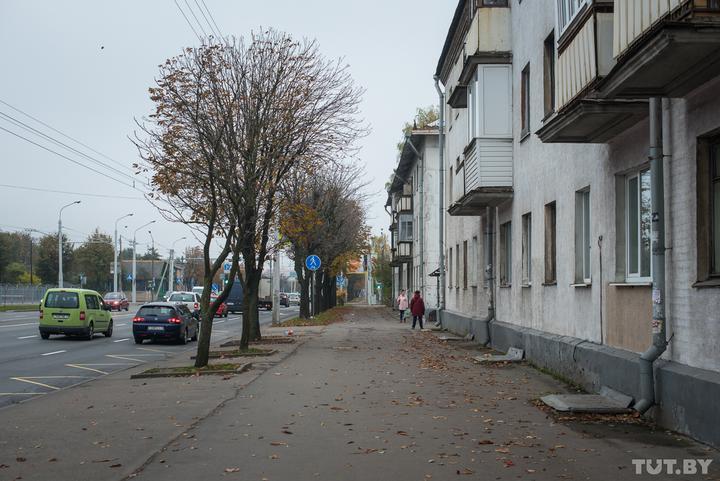
Brutal dispersal of the march on Sunday took place on Arlouskaya street. It happened when people were leaving. Riot police were grabbing march participants in the courtyards and even broke into apartments, used non-lethal weapons, and accused protesters of attacking the Tsentralny district police office. TUT.BY asked the participants what happened at the march. Some of them are ready to show their wounds, but would not go to see a doctor, and here we explain why.
“It was so scary that we did not know where to run, what if a grenade got thrown that way”
Friends Larisa and Anzhela walked the route from the Stele “Minsk – hero city” until the march was dispersed on Arlouskaya street. When they were ready to go home they stood at the public transport stop, and that was where the first grenade landed.
This is how it happened: the protesters were walking down Arlouskaya street towards the Supreme court. The bridge across the Svislach river was blocked on both sides.
Anzhela says that there was an attempt to detain someone, but at some point the crowd rushed towards the buses of the security forces, they began to leave, and the protesters threw several stones after them. Minibuses were driving down the street towards the Tsentralny police office. Larisa and Anzhela did not see anyone throwing stones at the police office building. They add that the distance between the fence and the building is too far and for anyone to be able to break the windows from the streetside “would have been impossible”.
After that everything was quiet, people were starting to leave. But then the special forces appeared and everyone started running into the courtyards of the apartment buildings. Larisa and Anzhela decided not to hide in the entrance halls of the apartment blocks and went to the public transport stop opposite the police office instead. There were many people there.
“Young people were running from the courtyard nearby and were pointing towards one of the buildings and shouted ‘OMON (the riot police) is there!’. At that point I noticed that one of the policemen pointed something in the direction of our stop. Then I noticed that a grenade was flying towards us. I didn’t see where it landed but felt a heat wave by my leg”, Anzhela tells. “I grabbed Larisa and realised that she went deaf. We were getting ready to run when the next grenade exploded near us. We were thrown back by the wave – we just fell, the thermos from the bag landed on the road. It was so scary! We did not know where to run, what if a grenade got thrown that way.”
Angela’s jacket and pants were torn by shrapnel from the grenade. The sole of the shoe stuck to the sock melting from the heat. She got a bruise on the side from falling to the ground. There are scratches on her body, and a burn on the hand. Today Anzhela saw a doctor who gave recommendations on how to treat the wounds but did not document her injuries. He explained that the doctors get regular visits from the police who demand the details of people who sought medical help after the marches are shared with them. Anzhela fears getting charged with administrative arrest or a fine.
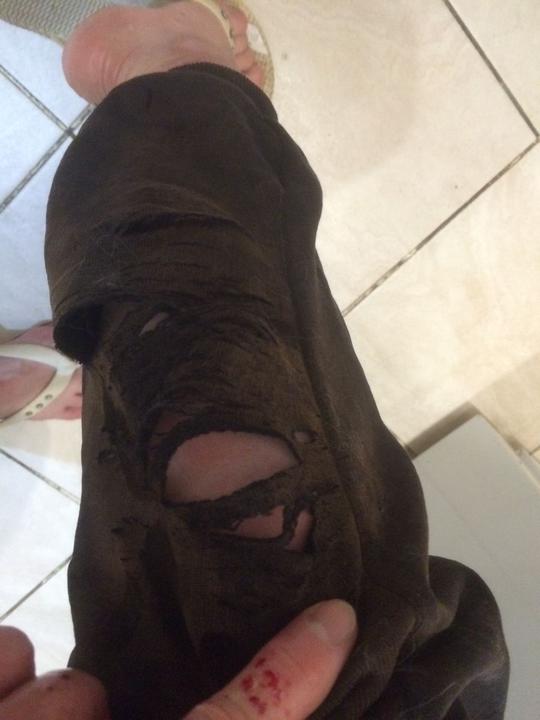
Source: eyewitness via TUT.BY
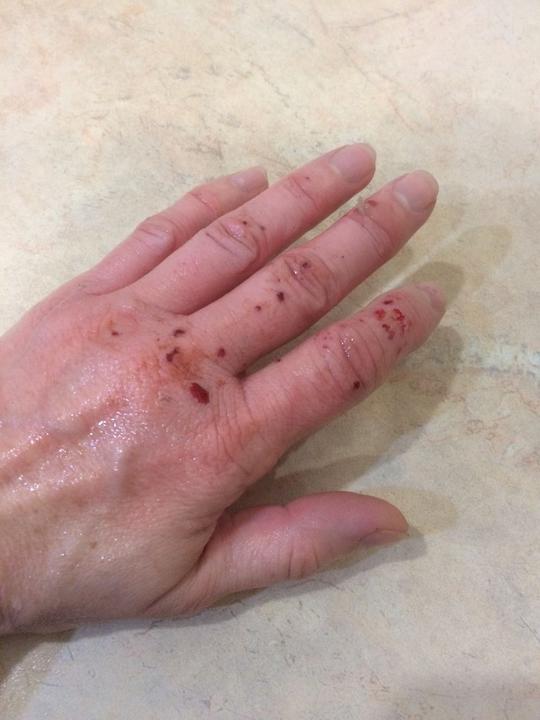
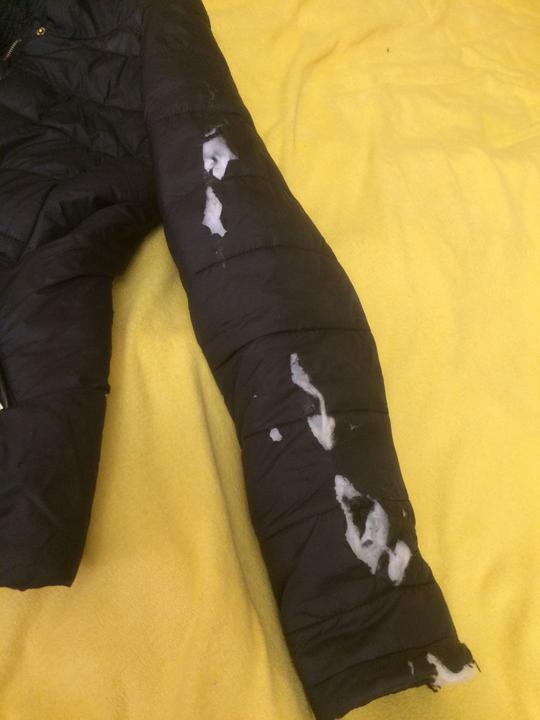
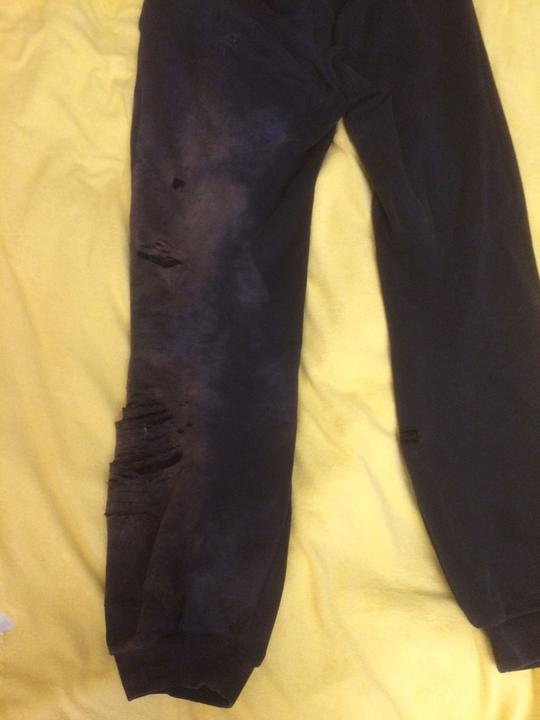
“Then a crazy number of explosions went off, it wasn’t clear what was happening. I stopped hearing properly, as if the sounds were coming through a wall, it was ringing in my ears. My coordination was impared. We got up and went to the wall and stood there like targets. The security forces were running past and swore at us and told us to leave. But where could we go if there were shootings and explosions everywhere?” Larisa says.
Larisa only consulted a doctor she knew. He suspects a slight concussion, which should pass soon. She does not want to seek medical help officially, as she fears that doctors will report the details to her employer and her employment will get terminated.
While friends Larisa and Anzhela were still standing near the bus stop they saw how some young men got detained. Then they went to another public transport stop and eventually got home.
“People were lured into a trap on Arlousakaya street”
Andrei, a march participant, also shared his experience. It turns out that after the first explosion went off he was not far away from Anzhela and Larisa. He also went deaf from the stun grenade explosion.
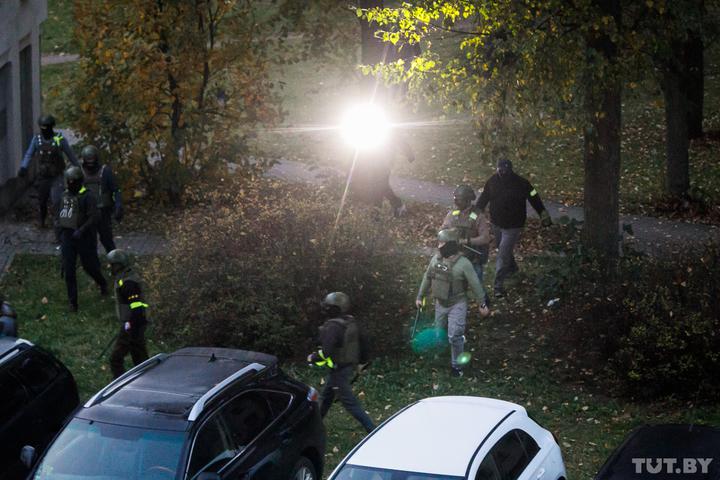
“People started screaming and running in all directions. People were crowded in between the two houses. I remember that I saw a woman in a yellow trench coat lying on the ground about three meters away from where the explosion went off. There was no blood but she was not moving”, Andrei remembers.
During the brutal dispersal of the march, Andrei hid in the park by the Svislach river and waited there for 30-40 minutes. Later volunteers drove him home.
“When I later thought about what happened I started suspecting that people were lured into this trap on Arlouskaya so that they could be cut off and then shot at with stun grenades. Three directions were blocked and there were only two narrow passages between the buildings left. Riot police started the shooting on Arlouskaya and then followed the people into the courtyards.”
Andrei explains that already at Bangalor square when participants got turned round their only option was going down Arlouskaya street as all other adjoining streets were blocked. When people found themselves on the bridge on Arlouskaya, the road got blocked on both ends. There was a police cordon by the Tsentralny district police office. In this way there was no escape route, but those who were by the park or Navavilenskaya street could run away. The shooting started when protesters tried to leave through the cordon by the police office. People could only escape into the courtyards.
Andrei reckons that to be able to reach the windows of the police office from afar “one had to be a champion hammer thrower”. At that time he never heard any sound of broken glass.
“We were blocked so that we would move towards Arlouskaya. People were discussing that this was a trap”
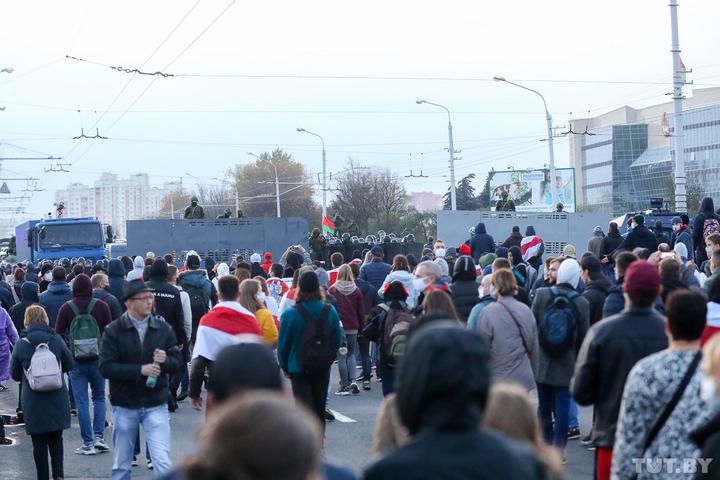
Pavel was walking with the crowd in the march from the Stele to Arlouskaya. He remembers what happened on this street. On the bridge on Arlouskaya people heard a loud ramble, but they were a decent distance away from the grenades. About nine explosions went off, with some popping sounds in between. People were leaving and shouting: “Walk, do not run!”
“But people started running towards the park. I was about 70 meters away from the explosions. People near me weren’t hurt but some acquaintances told me a young woman got hit by shrapnel from the grenade and was bandaged in the entrance hall of one of the houses.”
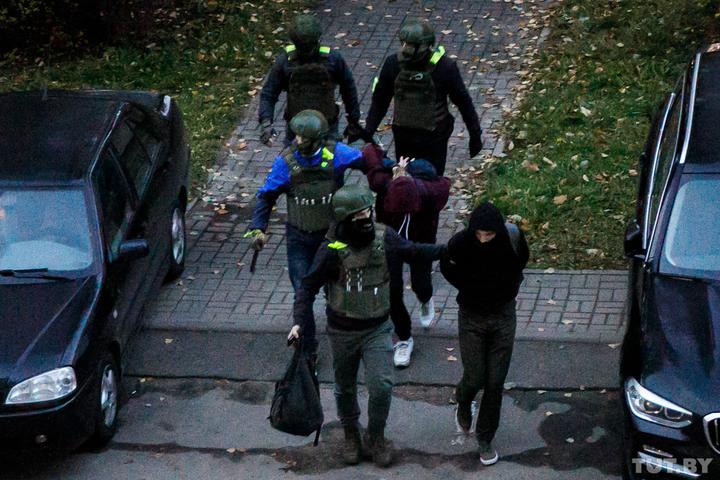
Pavel recalls that before the explosions on Arlouskaya the march was peaceful and police did not bother with the protesters on the approaches, the buses were not propped up against the procession. And by the end of the march, many people did not dare to go to the bridge.
“That place is like a trap. People raised their arms and shouted: ‘We don’t have any weapons’. The cordon stood in front of them. There were no conflicts between the protesters and the police. When the main crowd was going past the police office building no one was throwing anything, people were shouting: ‘Look at the windows, not the TV!’ I can’t say for a fact what happened there, but I can imagine it was all instigated by the police. They have already made a statement saying that they knew the plans of the protesters, but actually the procession was moving to Surhanava, where it was stopped by the police barrier. We were blocked in order to be routed towards Arlouskaya. People were discussing that it is a trap.”
Pavel wasn’t hiding in the house entrance halls, he managed to run away.